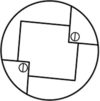Difference between revisions of "Roda"
m |
|||
| Line 42: | Line 42: | ||
For more information checkout the complete [[https://github.com/keeps/roda/blob/master/CHANGELOG.txt change log]]. | For more information checkout the complete [[https://github.com/keeps/roda/blob/master/CHANGELOG.txt change log]]. | ||
| + | |||
{{Infobox_tool_details | {{Infobox_tool_details | ||
|ohloh_id=Roda | |ohloh_id=Roda | ||
}} | }} | ||
Revision as of 15:19, 24 January 2014
RODA is a digital repository created in conjunction with the Portuguese National Archives. Its primary objective is to allow long-term preservation and authenticity of digital objects of national importance. Based as much as possible on standards, following international specifications to become a trustworthy repository, as the OAIS/TRAC, and having high standards of security and scalability. The user interface was also an important consideration, as it was designed for archivists, producers, and consumers.
Features
RODA is a complete digital repository that delivers functionality for all the main units of the OAIS reference model. RODA is capable of ingesting, managing and providing access to the various types of digital content produced by large corporations or public bodies. RODA is based on open-source technologies and is supported by existing standards such as the OAIS, METS, EAD and PREMIS.
- Conforms to open standards - RODA follows open standards using EAD for description metadata, PREMIS for preservation metadata, METS for structural metadata, and several standards for technical metadata (e.g. NISO Z39.87 for digital still images).
- Vendor independent - RODA is 100% built on top of open-source technologies. The entire infrastructure required to support RODA is vendor independent. This means that you may use the hardware and Linux distributions that best fit your institutional needs.
- Scalable - The service-oriented nature of RODA's architecture allows the system to be highly scalable, enabling the distribution of the processing load between several servers. Furthermore, new developments are in the works to enable RODA's preservation actions to be run over Hadoop clusters for even greater performance.
- Embedded preservation actions - Preservation actions and management within RODA is handled by a task scheduler. The task scheduler allows the administrator to define the set of rules that trigger specific actions, and when these should take place. Preservation actions include format conversions, checksum verifications, reporting (e.g. to automatically send SIP acceptance/rejection emails), notification events, etc.
- Authenticity - RODA uses preservation metadata (PREMIS) to create a trust chain between all format migrations and content verifications. The preservation metadata, together with the establishment of trust of its surrounding environment (ISO 16363) ensures reliability of the service and authenticity of the enclosed digital records.
- Support for multiple formats - RODA is capable of ingesting and normalizing (according to the preservation plan in place) text documents, raster images, relational databases, video, and audio. A plug-in mechanism enables RODA to easily support additional formats.
- Copes with the rapid changing nature of technology - The plug-in and task scheduling mechanism allows an easy way to add more functionality to the system (e.g. new preservation events, alerts, tools, etc.). Also, the service oriented architecture allows RODA base components to be incrementally updated, allowing a heterogeneous use of technologies at all levels: hardware, OS and applications.
- Advanced access control - Users must be authenticated before accessing the repository. All user actions are logged for future accountability. Permissions are granular and can be defined at repository level, all the way down to individual data objects.
- Integration with 3rd party systems - RODA exposes all its functionality via Web Services. Convenient Java libraries are available to allow developers to interact with RODA via its Core APIs. Several tools exist to create and manipulate the SIPs and submit them to RODA's ingest workflow.
- Advanced ingest workflow - RODA supports the ingest of new digital material as well as associated metadata in 4 distinct ways: 1) online submission (self-archiving), 2) off-line submission using an client application called “RODA-in” (off-line self-archiving), 3) batch import by depositing SIPs via FTP or SMB/CIFS; and 4) integration with third-party document management software via invocation of SOAP Services or client API.
Development Activity
Code is being actively developed at [RODA GitHub repository]. Lastest version is RODA 1.2.0 (release at 2013-10-25) where the following new features were added:
- Using Droid for file format identification
- Added support for presentations: Microsoft Powerpoint (ppt, pptx), OpenOffice Presentation / LibreOffice Impress (odp)
- Added support for spreadsheets: Microsoft Excel (xls, xlsx), OpenOffice Spreadsheet / LibreOffice Calc (ods)
- Added support for email (.eml) but conversion is not yet supported
- Added web service to download AIP
- Added web service to download DIP
For more information checkout the complete [change log].
